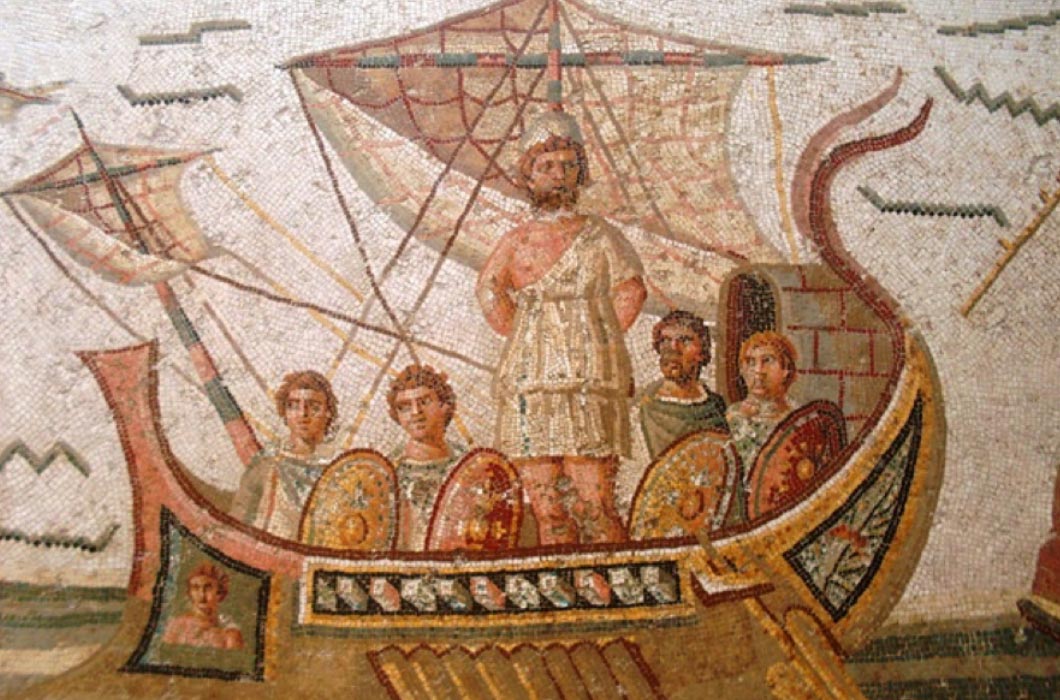
Homer in the Baltic: Odysseus a Fair-Haired Dane?
Described by Homer and Pindar as ‘fair haired’, one can ask the perturbing question: Was Odysseus a Dane originating from the Baltic Sea and is Troy located on the Gulf of Finland? Since ancient times, Homeric geography has raised doubts and perplexities. One should only think of the absurd position of Ithaca, or the Peloponnese which is always described as a plain.

Plutarch at Delphi (Odysses / CC BY-SA 4.0)
Plutarch Provides a Clue
The key for penetrating this world is provided by the Greek writer Plutarch (circa AD 46 – 120), who states that Ogygia, the island of the goddess Calypso who held Odysseus prisoner for seven years, lies in the North Atlantic: “five days’ from Britain, towards the sunset”. Ogygia can be identified as one of the Faroe Islands, Nólsoy, where, according to the Odyssey, there are caves, meadows, large colonies of seabirds, small watercourses, low beaches that allow an easy landing (it is the lowest island of the Faroes, which are generally very steep) and even a mountain called Høgoyggj, whose name is very similar to that of Ogygia in Greek (Ogygiē).

Odysseus at the court of Alcinous by Francesco Hayez. (1814) Galleria Nazionale di Capodimonte (Public Domain)
Odysseus Homeward Bound
At this point, following the precise indications of the Odyssey on the eastward route that Odysseus travelled after leaving Ogygia, heading for Ithaca, one is able to locate Scheria, the land of the Phaeacians, on the southern coast of Norway, near the mouth of the river Figgjo, where there are many Bronze Age remains. It is noteworthy that in the ancient Nordic language, skerja means ‘rock’ and that Odysseus in his landing on the mouth of the river was helped by the reversal of the stream direction due to the high tide, a fact that is unknown in the Mediterranean sea, but is usual along the Atlantic coasts.
Then the Phaeacians brought Odysseus from Scheria to Ithaca. Starting from the Norwegian coast (lapped by the Gulf Stream, the river ‘Ocean’ of Greek mythology), exact matches enables one to recognize the archipelago where Ithaca can be located within a group of Danish islands (South-Fyn islands). In accordance with the Odyssey, Ithaca is the westernmost island in an archipelago where there are three main islands: Dulichium, (‘the Long’ in Greek) an island never found in the Mediterranean, Same and Zacynthus, which correspond to the current Langeland (‘the Long’ in Danish), Aerø and Tåsinge. The South-Fyn is the only archipelago in the world that corresponds exactly to that described by Homer.

Odysseus’ revenge on Penelope's suitors by Christoffer Wilhelm Eckersberg (1814) The Hirschsprung Collection (Public Domain)




